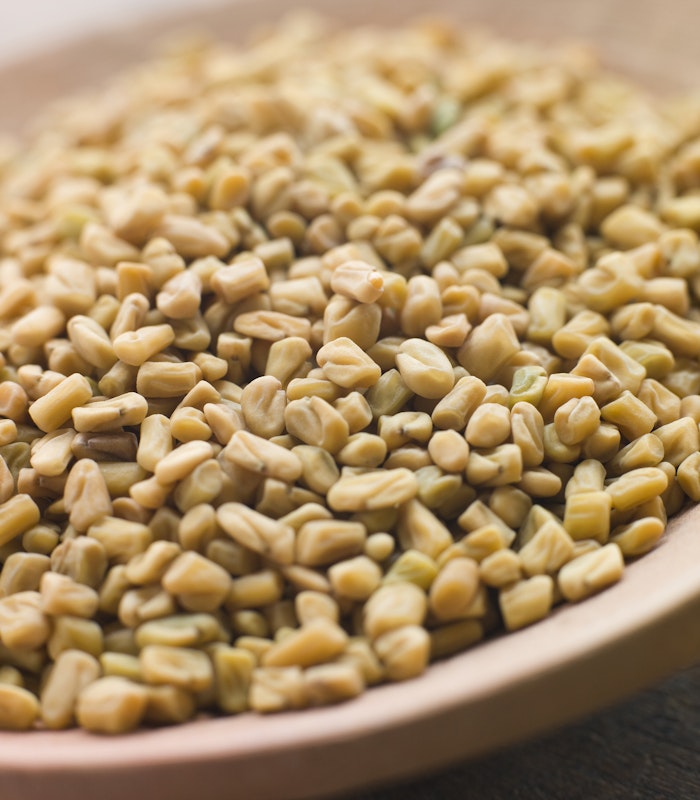Most applications for Fenugreek Gum combine the functionalities of thickening and emulsification. These include soups, sauces and dressings it delivers emulsification, viscosity, body, shine and stability. In dry mixes and batters it can deliver increased overrun/volume by adding structure through baking. In finished baked goods it is known to aid in moisture management to extend shelf life in addition to providing structure and strength. Fenugreek Gum is the most soluble and dispersible of all the major hydrocolloids, aiding in it’s ease of use with a wide variety of processing equipment. The ability of Fenugreek Gum to deliver viscosity is influenced by the presence of soluble cations and electrolytes and the application pH. Although Fenugreek Gum exhibits limited synergies with other carbohydrate polymers for additional functionality, it does compliment the functionality of other hydrocolloids in most applications. The use of Fenugreek seeds has been traced back to 4000 B.C. and seeds were found in the tomb of Tutankhamen. The dried seeds are used frequently in the cuisines of the Indian subcontinent, Turkey, Iran, Egypt and Ethiopia as well as traditional food consumed during the celebration of the Jewish New Year, Rosh Hashana. Components within Fenugreek Seeds contribute to “curry,” “maple syrup,” or “caramel” aroma notes to the powder.

Fenugreek Gum
Common Names
- Fenugreek Gum
- Greek Hay
Functionality
- Emulsifier
- Thickener
Quality
- Viscosity
- Powder Color
- Particle Size
Applications for Fenugreek Gum
Botanical Sources
Fenugreek Gum is from the dehulled endosperm of the edible legume seeds of Trigonella foenum-graecum. The processing to produce the dry powder we are familiar with is minimal. Once the hulls and endosperm are removed from the seeds, they are washed to reduce protein content. The endosperm splits are then milled and extruded prior to drying, grinding and sifting to deliver a powder of desired mesh. 200 mesh is the most common particle size for powdered Fenugreek Gum.

Polymer Chemistry
The carbohydrate polymer of Fenugreek Gum is a galactomannan, like Guar, Tara, Locust Bean and Cassia Gums. The linear polymer chain of mannose units joined by β (1-4)-D linkages contains galactose substitutions attached with an α (1-6) linkage. The overall proportion of mannose to galactose is approximately 1:1. Full hydration and functionality are achieved with use in both cold and hot applications. Once hydrated it is known to reduce the surface tension of water adding interfacial activity and stabilizing oil in water and air in water emulsions acting in the continuous water phase. The pH in solution is near neutral (5-7).
